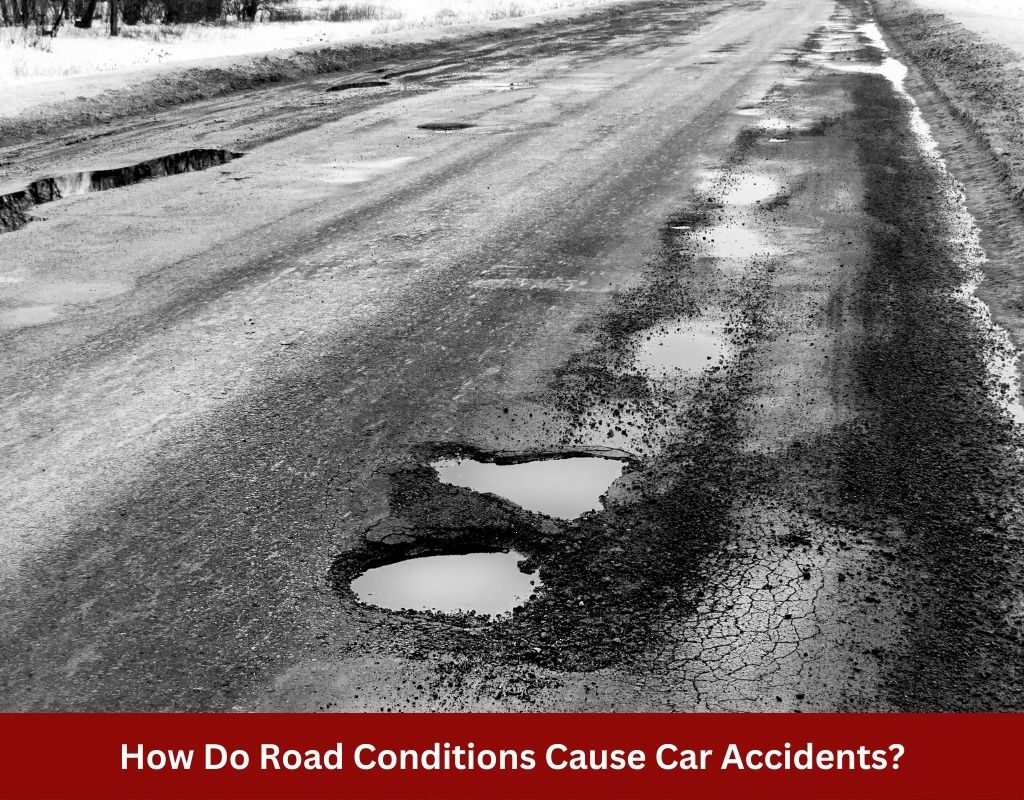Driving is difficult to manage due to distractions and poor decisions from other drivers. You can be an excellent driver, but everyone else won’t be, and this can result in accidents and injuries.
Road conditions increase the likelihood of an accident by adding another driving hazard you may not adequately anticipate. The hidden danger of road defects in car accidents can present itself in many ways that directly impair your ability to drive safely.
Understanding which road conditions and how they cause accidents is the most effective way to keep yourself informed and protected against hazards on the road. Let’s review a few of the most relevant issues you should know now.
Wear From Frequent Use
One of the biggest reasons for poor road conditions is the wear resulting from frequent use.
While public roads are designed to be used regularly, they will eventually fall apart the more they are driven on. This can easily result in dangerous road hazards like potholes and missing road markers.
Potholes are tricky because hitting one can end in many different ways. For example, one of your wheels might get stuck in a larger pothole and cause serious damage to the bottom of your car. Alternatively, hitting a moderate pothole at a significant speed can result in losing control of your vehicle.
Even without physical damage to the road, the lack of necessary road markers is also dangerous. This can result in cars driving in oncoming lanes and failing to merge before a lane ends.
When a road is used frequently, gradual wear and damage are inevitable. Keep an eye out for any dips, breaks, or otherwise unsteady parts in the road, and keep closer to the shoulder if you can’t identify where the lane is.
Slippery Roads
Another serious road defect involves temporary conditions in the form of slippery roads.
Your car’s tires must constantly be able to grip the road to provide traction and propel your car in the direction you are trying to go. When the road is wet, this ability decreases, and you’ll have difficulty maneuvering and stopping.
In particular, rain, snow, and ice are the main concerns to watch out for when driving.
Rain is dangerous because it obscures visibility and increases your stopping distance. It can also present the risk of hydroplaning and losing control of your vehicle if you hit larger water patches on the road.
Snow has the same dangers as rain but generally results in greater instability and skidding. This becomes particularly hazardous should it form ice, eliminating your control over your car.
Many drivers do not understand and plan for the increased dangers of slippery roads. This means you must be diligent about keeping plenty of distance between other cars and maintaining a slow speed to prevent accidents during wet road conditions.
Lack of Maintenance
It is also important to understand that road defects become larger due to a lack of maintenance.
A small pothole might not initially cause an accident, but over time it can grow into a larger crack in the road that does catch an unsuspecting driver. If these issues were quickly addressed, poor road conditions would greatly decrease accidents.
Unfortunately, road defects are not a high priority, so many preventable hazards are amplified into full-blown dangers.
Poor Design
While roads can become defective over time, they can also start with road defects if designed poorly.
Roads are supposed to be designed to ensure the safety of anyone driving on them. Depending on the location and resulting obstacles and visual obstructions that a road may feature, this can be difficult to achieve.
If a road is poorly designed, drivers may lack the space or information needed to drive safely and avoid an accident. Clear examples include roads with tight or nonexistent shoulders that provide no breathing room and streets that lack proper signage to prevent safe travel from all directions.
When a road doesn’t naturally provide a safe driving environment, there is more pressure on you to avoid an accident. Some drivers are not up to the task and will fall victim to the flaws of bad road design.
Bad Conditions Are Unpredictable
A final insight is that road defects are dangerous because they are unpredictable.
You may have no difficulty driving when the terms are easy, but driving in poor conditions is where you’ll be tested the most. This is likely where you have the least driving experience, and you’ll probably panic and not know what to do.
If you’ve ever driven after the first rain in a while, then you know exactly what it looks like when road conditions affect driving. Other drivers are scared and hesitant, meaning accidents increase when they fail to account for changes like increased stopping time.
When you encounter a road defect that affects your car, it will often cause a sudden and dramatic impact that may cause you to lose control and crash. You won’t have much time to react and make the right decision, so the chance of something going wrong is high.
Your safest choice is to avoid roads with poor conditions and drive cautiously if you encounter them.
Closing Thoughts
Road defects are incredibly dangerous and directly result in more accidents when drivers are unprepared for the sudden loss of control of their vehicle. Safe roads are ideal, but you cannot always ensure the road you drive on is defects-free.
You should understand how highly unpredictable road conditions lead to accidents to keep yourself safe. This happens due to wear and tear from frequent use, slippery roads reducing traction and increasing braking time, a lack of adequate maintenance, and an inherently poor design.
Safe driving habits are the best way to keep you and your car intact, especially when bad conditions occur. Keep your eyes on the road, limit your speed, and drive defensively to reduce your chances of experiencing a car accident from road defects.
